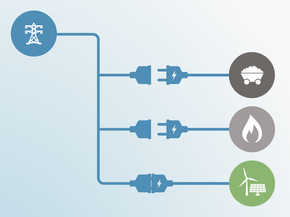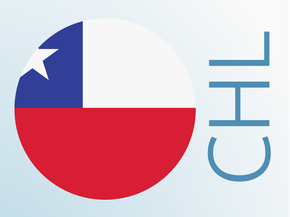Targets
Target Overview
Morocco submitted its latest NDC update to the UNFCCC in July 2021, strengthening its initial pledge. The updated target includes an unconditional emissions reduction of 18.3% below BAU by 2030, up from a 17% reduction in the previous NDC. Thanks to an updated BAU scenario, this new target translates to an absolute emissions level that is 21% lower than the previous target—from 145 MtCO2e in the 2016 submission to 118 MtCO2e in the latest one (excluding LULUCF).
The conditional target was strengthened to 45% below BAU by 2030, up from a 42% reduction target in the first NDC. We estimate this would translate to an absolute emissions level of 84 MtCO2e by 2030. The CAT rates Morocco’s target as "Almost sufficient" when rated against modelled domestic pathways and when rated against the fair share contribution.
Morocco is on track to meet its unconditional target by 2030. However, it will only achieve its conditional target if all planned policies are implemented.
In December 2021, Morocco submitted its long-term strategy (LTS) to the UNFCCC, in which it committed to increase the share of renewable energy in the electricity mix to 80% by 2050 (Kingdom of Morocco, 2021c). In its LTS, Morocco also stated it will explore scenarios to achieve net zero emissions . The government intends to consider scenarios based on sectoral analysis to achieve carbon neutrality by the end of the century. However, a concrete plan has yet to be released.
Morocco has not submitted a new NDC since COP26 despite all countries having been invited to do so before COP27.On 8 November 2021, the disputed Saharawi Arab Democratic Republic (SADR) published an indicative Nationally Determined Contribution (iNDC) for Western Sahara. It should be noted that the CAT only took into account the NDC provided by the Moroccan government and does not cover the iNDC, as SADR is not a party to the UNFCCC. It remains unclear to what extent Morocco’s planned mitigation measures, in particular in the renewable energy sector, will also be implemented in the disputed Western Sahara region.
| MOROCCO — Main climate targets |
|---|
| 2030 unconditional NDC target | |||
|---|---|---|---|
| Formulation of target in NDC | The 2021 NDC increases the unconditional mitigation objective to 18.3% below BAU by 2030 | ||
|
Absolute emissions level in 2030 excl. LULUCF |
118 MtCO2e 53% above 2010 levels |
||
| Status | Submitted on 22 June 2021 | ||
| 2030 conditional NDC target | |||
|---|---|---|---|
| Formulation of target in NDC | The 2021 NDC increases the conditional mitigation objective to 45.5% below BAU by 2030 | ||
|
Absolute emissions level in 2030 excl. LULUCF |
84 MtCO2e 1% below 2010 levels |
||
| Status | Submitted on 22 June 2021 | ||
| Net zero & other long-term targets | |||
|---|---|---|---|
| Formulation of target | Morocco will consider scenarios to achieve carbon neutrality in the second half of the century | ||
|
Absolute emissions level in 2050 excl. LULUCF |
Not available as net zero target by 2050 only announced as a visionary statement | ||
| Status | Announced in December 2021 | ||
NDC updates
Morocco’s updated NDC, submitted on 22 June 2021, strengthened its 2030 target, improving it in two ways. First, both the unconditional and conditional 2030 emissions reduction targets were revised to be more ambitious—from 17% to 18.3% below the business as usual (BAU) scenario for the unconditional target and from 42% to 45.5% for the conditional one. Morocco also revised downwards the BAU scenario, to which the reduction targets are applied. For the unconditional target, this leads to 21% lower emissions (excl. LULUCF) in 2030 compared to the first NDC submission, and 29% for the conditional target.
| MOROCCO — History of NDC updates | First NDC | 2020 NDC update |
|---|---|---|
| 1.5°C compatible |
|
|
| Stronger target | N/A |
|
| Fixed/absolute target |
|
|
| MOROCCO | First NDC | 2021 NDC update |
|---|---|---|
| Formulation of target in NDC |
Unconditional target: 17% reduction in GHG emissions by 2030 compared to BAU scenario Conditional target: 42% reduction in GHG emissions by 2030 compared to BAU scenario |
Unconditional target: The 2021 NDC increases the unconditional mitigation objective to 18.3% below BAU by 2030 Conditional target: The 2021 NDC increases the conditional mitigation objective to 45.5% below BAU by 2030 |
|
Absolute emissions level excl. LULUCF |
Unconditional target: 145 MtCO2e by 2030 Conditional target: 107 MtCO2e by 2030 |
Unconditional target: 118 MtCO2e by 2030 Conditional target: 84 MtCO2e by 2030 |
|
Emissions compared to 2010 excl. LULUCF |
Unconditional target: 91% above 2010 emissions by 2030 Conditional target: 41% above 2010 emissions by 2030 |
Unconditional target: 53% above 2010 emissions by 2030 Conditional target: 1% below 2010 emissions by 2030 |
| CAT rating |
Overall rating*: 1.5°C Paris agreement compatible |
Conditional NDC target against modelled domestic pathways: Almost sufficient Unconditional NDC target against fair share: 1.5°C compatible |
| Sector coverage |
The NDC covers the following sectors: • Energy • Industry (excl. the cement and phosphate industry) • Agriculture • Waste • Transport • Forestry |
Economy-wide with the addition of new industrial sub-sectors (cement and phosphate) |
| Separate target for LULUCF | Yes, separate target for agriculture, forestry, and other land use (AFOLU). AFOLU mitigation measures represent a reduction of 4% below BAU by 2030. Without AFOLU measures, the emissions reduction target is 13% below BAU. | No |
| Gas coverage | CO2, CH4, N2O | CO2, CH4, N2O, HFCs |
| Target type | Reduction below BAU scenario | Reduction below BAU scenario |
| Explanation why the target is a fair contribution towards the global goal | Yes, based on contribution to global emissions, emissions per capita and being one of the most vulnerable countries to the impacts of climate change | Not explicitly mentioned |
* Before September 2021, all CAT ratings were based exclusively on fair share and only assessed a country’s target.
Target development timeline & previous CAT analysis
CAT rating of targets
The CAT rates NDC targets against what a fair contribution to achieving the Paris Agreement’s long-term temperature goal would be as well as against what needs to happen within a country’s own borders. Morocco will need support to achieve those needed reductions within its borders.
Morocco has put forward two targets in its NDC. One that it will achieving using its own resources and one that requires international support. We rate the country’s unconditional target against its fair share contribution and its conditional target against the level of reductions needed within its border defined by a modelled domestic pathway.
We rate Morocco’s conditional NDC “Almost sufficient” when compared with modelled domestic emissions pathways. The “Almost sufficient” rating indicates that Morocco’s internationally supported target in 2030 is not yet consistent with the 1.5°C temperature limit but could be, with moderate improvements. If all countries were to follow Morocco’s approach, warming could be held below—but not well below—2°C.
We rate the unconditional NDC reduction target as “Almost sufficient” when compared with its fair share contribution to climate action. The “Almost sufficient” rating indicates that Morocco’s unconditional target against fair share in 2030 is not yet consistent with limiting warming to 1.5°C but could be, with moderate improvements. Morocco’s target is within the range of what is considered to be a fair global effort, but would require other countries to make deeper reductions and comparably greater effort to limit warming to 1.5°C. If all countries were to follow Morocco’s approach, warming could be held below—but not well below—2°C.
We have revised our previous assessment to exclude the LULUCF mitigation measures planned in the agricultural sector. This resulted in a change in the rating of the unconditional target against fair share but did not have an impact on the overall rating of Morocco.
Further information on how the CAT rates countries (against modelled domestic pathways and fair share) can be found here.
Net zero and other long-term target(s)
In its LTS, the Moroccan government stated its intention to provide sectoral analysis to evaluate Morocco’s capacity to achieve carbon neutrality during the century. Therefore, we assume that Morocco intends to commit to a net zero target (Kingdom of Morocco, 2021c). As of March 2023, a concrete plan and timeline have yet to be released.
Given its preliminary nature, and the lack of more detailed information, the CAT currently does not evaluate Morocco’s net zero target. We will do so once further information is communicated.
Further analysis
Latest publications
Stay informed
Subscribe to our newsletter







